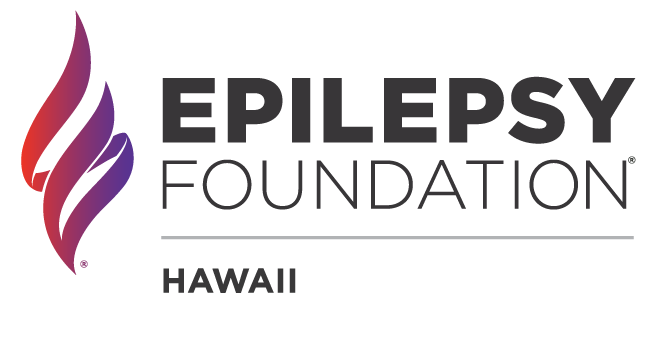Frequently Asked Questions
This page is intended to provide basic information about epilepsy and seizure disorders to the general public. It is not intended to, nor does it, constitute medical advice, and readers are warned against changing medical schedules and activities without first consulting a physician.

What is epilepsy?
Epilepsy is a neurological condition that from time to time produces brief disturbances in the normal electrical functions of the brain. Normal brain function is made possible by millions of tiny electrical charges passing between nerve cells in the brain and to all parts of the body. When someone has epilepsy, this normal pattern may be interrupted by intermittent bursts of electrical energy that are much more intense than usual. They may affect a person’s consciousness, bodily movements or sensations for a short time.
These physical changes are called epileptic seizures. That is why epilepsy is sometimes called a seizure disorder. The unusual bursts of energy may occur in just one area of the brain (partial seizures), or may affect nerve cells throughout the brain (generalized seizures). Normal brain function cannot return until the electrical bursts subside. Conditions in the brain that produce these episodes may have been present since birth, or they may develop later in life due to injury, infections, structural abnormalities in the brain, exposure to toxic agents, or for reasons that are still not well understood. Many illnesses or severe injuries can affect the brain enough to produce a single seizure. When seizures continue to occur for unknown reasons or because of an underlying problem that cannot be corrected, the condition is known as epilepsy. Epilepsy affects people of all ages, all nations, and all races. Epilepsy can also occur in animals, including dogs, cats, rabbits, and mice.
What is the difference between seizures and epilepsy?
Seizures are a symptom of epilepsy. Epilepsy is the underlying tendency of the brain to produce sudden bursts of electrical energy that disrupt other brain functions. Having a single seizure does not necessarily mean a person has epilepsy. High fever, severe head injury, lack of oxygen — a number of factors can affect the brain enough to cause a single seizure. Epilepsy, on the other hand, is an underlying condition (or permanent brain injury) that affects the delicate systems which govern how electrical energy behaves in the brain, making it susceptible to recurring seizures.
Which doctors treat epilepsy?
Neurologists, pediatric neurologists, pediatricians, neurosurgeons, internists and family physicians all provide treatment for epilepsy. Specialized care for people whose seizures are difficult to control is available in large medical centers, neurological clinics at university and other hospitals, and from neurological specialists in private practice.
Is epilepsy ever contagious?
No, epilepsy is never contagious. You cannot catch epilepsy from someone else and nobody can catch it from you.
What should I consider if there has only been a single seizure?
When a child or adult has never had a seizure before, the first seizure is usually followed by a careful medical evaluation to help the doctor decide whether to recommend treatment with seizure-preventing drugs, or to wait and see whether it occurs again. The most important factor in deciding whether to begin drug treatment for a single seizure is the probability of further seizures. Physicians use both diagnostic tests and careful evaluation of the seizure itself to determine how likely it is that the patient may have more seizures in the future. Age, family history, and possible causes of the seizure are among the factors that are considered. Non-medical issues, such as loss of driver’s license or worries about impact on employment, may also enter into the decision. In many cases, the doctor will recommend waiting to see if another seizure occurs before beginning treatment.
What causes epilepsy?
In about seven out of ten people with epilepsy, no cause can be found. Among the rest, the cause may be any one of a number of things that can make a difference in the way the brain works. For example, head injuries or lack of oxygen during birth may damage the delicate electrical system in the brain. Other causes include brain tumors, genetic conditions (such as tuberous sclerosis), lead poisoning, problems in development of the brain before birth, and infections like meningitis or encephalitis. Epilepsy is often thought of as a condition of childhood, but it can develop at any time of life. About 30 percent of the 200,000 new cases every year begin in childhood, particularly in early childhood and around the time of adolescence. Another period of relatively high incidence is in people over the age of 65.
What should I do if I suspect a seizure disorder?
If you think you or a loved one might be having seizures, it is important to discuss with your physician what has been happening. Keep a record of how often the unusual episode occurs, the time of day it happens and what form it takes. Giving the doctor this information will help him or her determine if what you are describing might be a type of epilepsy.
How is epilepsy diagnosed?
The doctor’s main tool in diagnosing epilepsy is a careful medical history with as much information as possible about what the seizures looked like and what happened just before they began. A second major tool is an electroencephalograph (EEG). This is a machine that records brain waves picked up by tiny wires taped to the head. Electrical signals from brain cells are recorded as wavy lines by the machine. Brain waves during or between seizures may show special patterns which help the doctor decide whether or not someone has epilepsy. Imaging methods such as CT (computerized tomography) or MRI (magnetic resonance imaging) scans may be used to search for any growths, scars, or other physical conditions in the brain that may be causing the seizures. In a few research centers, positron emission tomography (PET) imaging is used to identify areas of the brain which are producing seizures.
How can people guard against having seizures?
A person with epilepsy can help control his or her seizures by taking the prescribed medication regularly, maintaining regular sleep cycles, avoiding unusual stress, and working closely with his or her physician. Regular medical evaluation and follow-up visits are also important. However, seizures may occur even when someone is doing everything he or she is supposed to.
How is epilepsy treated?
Epilepsy may be treated with drugs, surgery, a special diet, or implanted devices. Of these treatments, drug therapy is by far the most common, and is usually the first to be tried. A number of medications are currently used in the treatment of epilepsy. These medications control different types of seizures. People who have more than one type of seizure may have to take more than one kind of drug, although doctors try to control seizures with one drug if possible. A seizure-preventing drug (also known as an antiepileptic or anticonvulsant drug) won’t work properly until it reaches a certain level in the body, and that level has to be maintained. It is important to follow the doctor’s instructions very carefully as to when and how much medication should be taken. The goal is to keep the blood level high enough to prevent seizures, but not so high that it causes excessive sleepiness or other unpleasant side effects.
Information from: Epilepsy Foundation of America.
